Description
Taro, Colocasia esculenta, kalo, dasheen or known by many other names, is another perfect staple perennial plant. If you live in Hawaii you know this plant. It’s growing, there are stickers and t-shirts and tattoos with taro everywhere! This is the staple crop which poi is made from, even if you do not enjoy poi, you can enjoy the starchy corm of the taro plant. You may cook the corm just like potatoes in many different ways. Not only are the corms edible but the leaves and leafstalks are too! This is a wonderful vegetable, and to me it is the essential tropical looking plant. Those big wonderful heart-shaped leaves just scream tropical. There are non-edible varieties, hundreds of edible varieties, varieties that grow in water, varieties that grow in soil, shade loving varieties, and sun loving varieties. Grow different varieties to find your favorite or to fit your needs!



Propagation
Taro may be grown from seed, seeds being hard to find, but is mostly grown from setts or cormels. You may also propagate from corms, but why do that if you can just eat them!
Setts, being the most typical propagation method, are the top of the corm, or root, and a section of the stem. You leave a small section of the top of the corm, less than ½ inch (1 cm), and take the leaves off the stem. You simply let it heal, for a day or two, and then plant right into the ground where you want it to grow. For best results plant your sett within a week. It is literally that simple, the larger sett you plant the larger your harvestable corm will be.
A cormel is a small immature corm attached to the mother plant, you could call this a sucker too. To propagate, you take this cormel and follow the same instructions for setts. If the corm is small enough you can plant that directly in a new spot to watch it grow into a fully mature plant. To remove cormels from the mother plant just pull the corms apart.
Pull from the ground (then rinse in bucket of water)

Grab cormel and pull from main corm
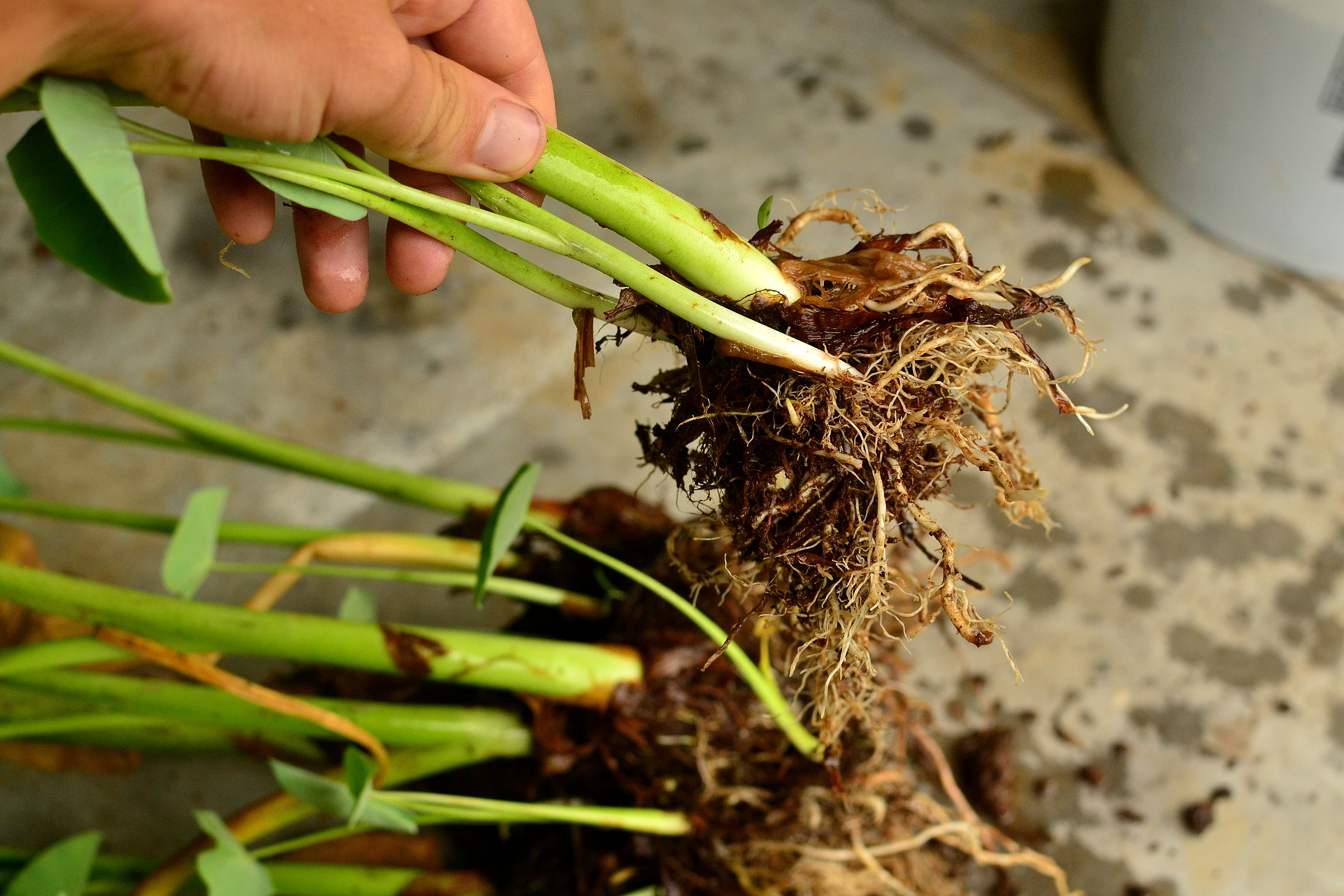
Removed cormel
Separate Sett and corm
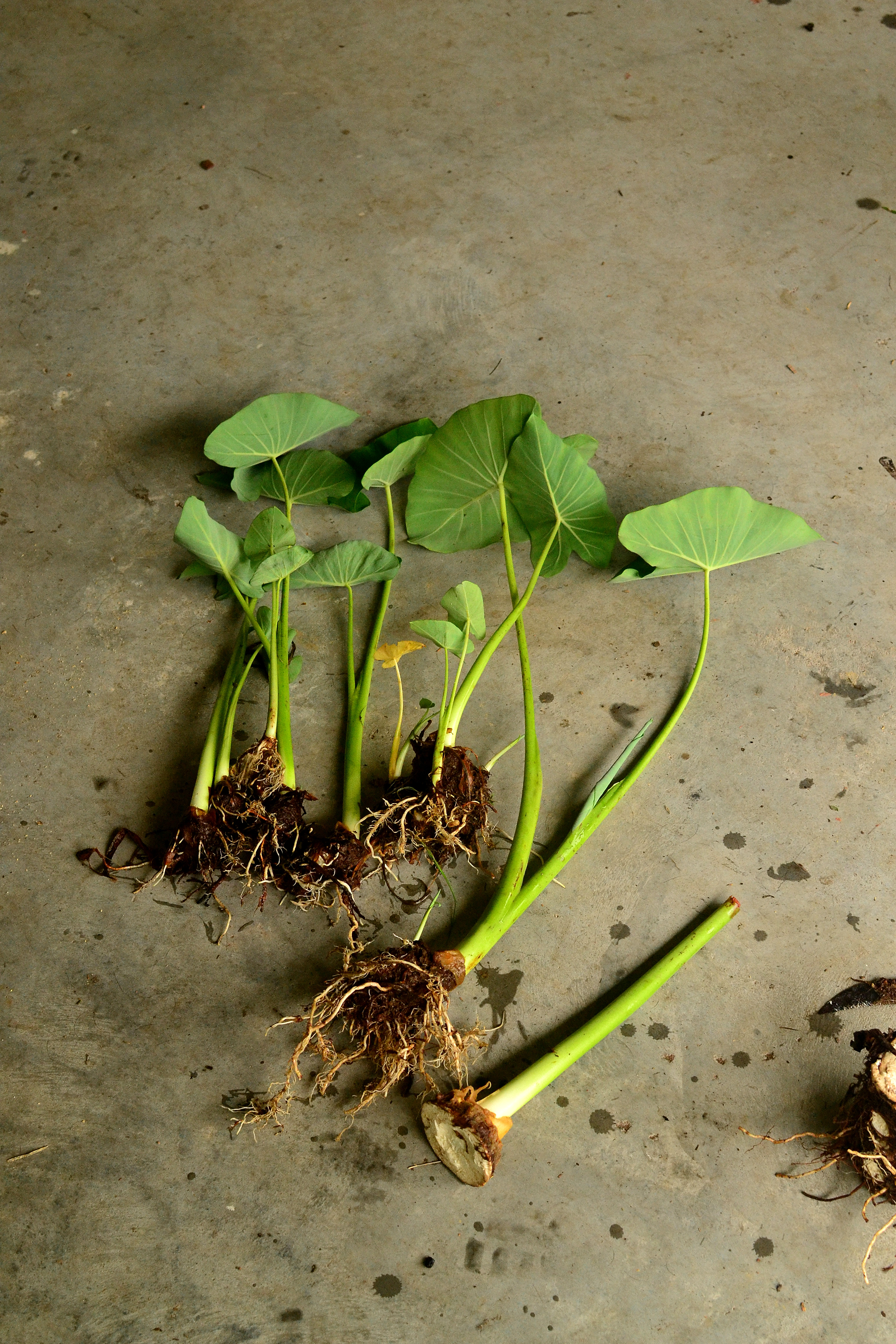
Cormels and Sett ready for planting
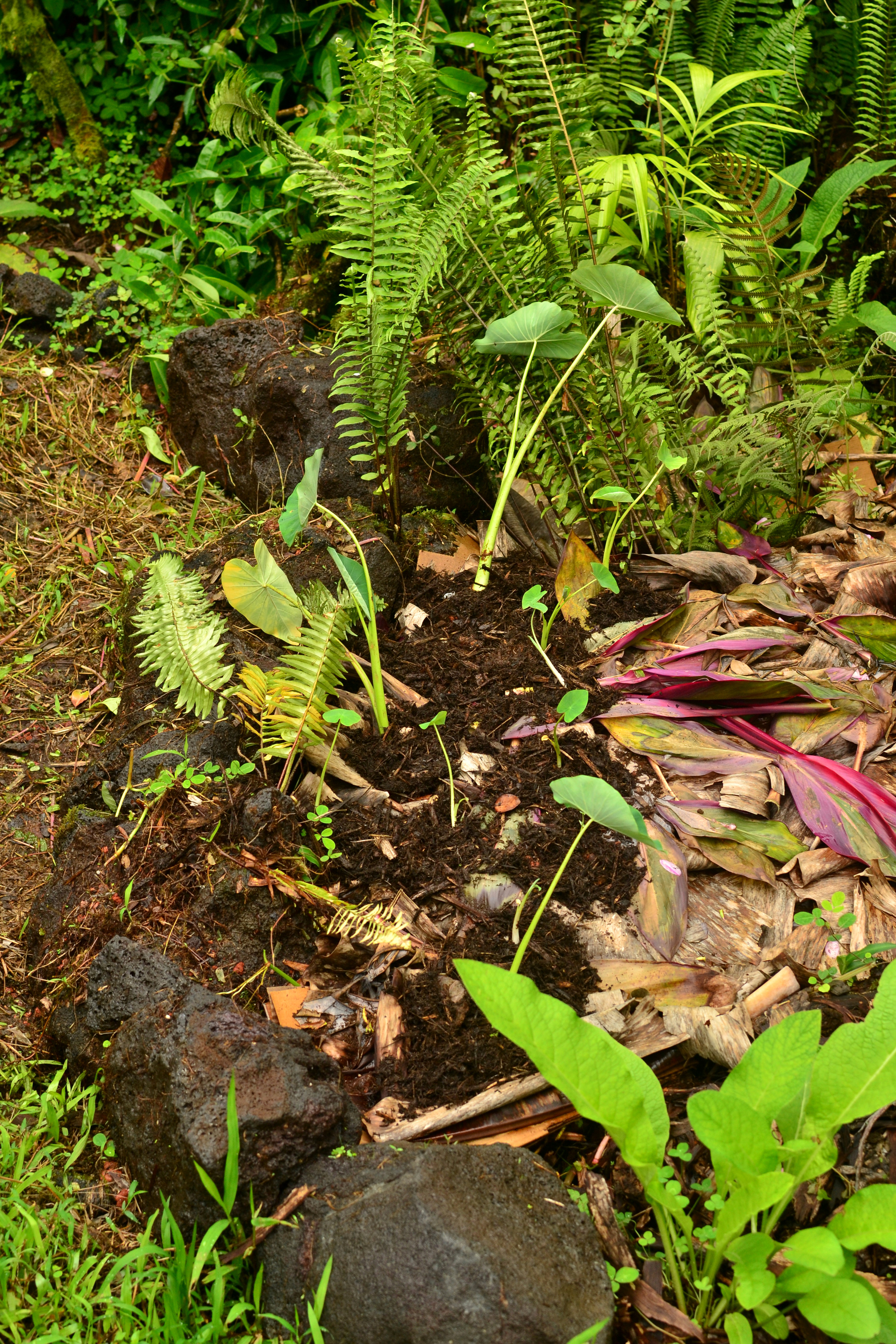
Stick cormels into ground
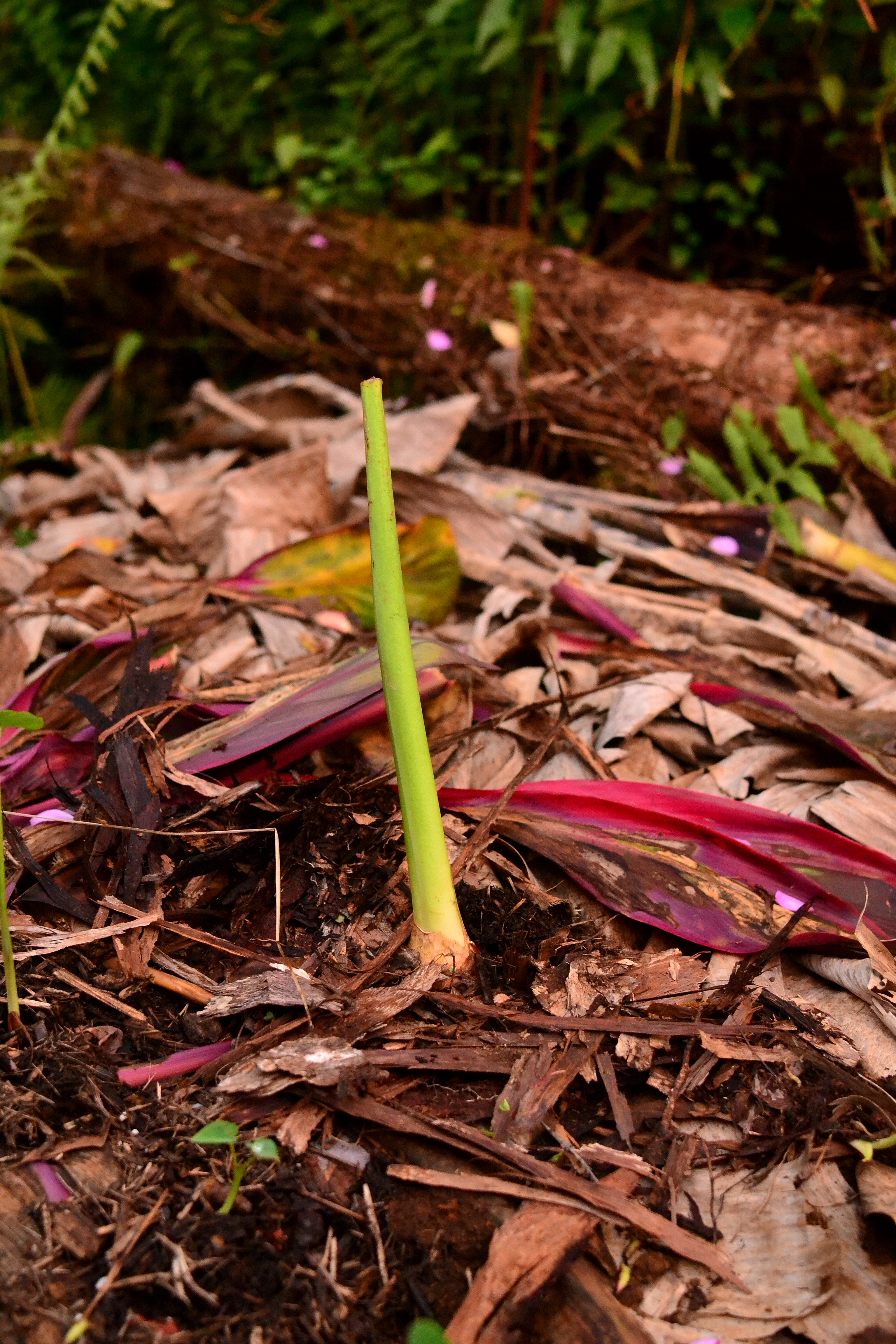
Stick sett into ground
Care
If growing in soil, weeding is necessary at all stages of plant growth. If grown in water, less weeding is necessary due regulated water movement. A way to reduce weeding is to grow ground cover around your taro, I like to use sweet potato because of its vigorous and edible natures. However, a clover or perennial peanut would be suitable because of taros high demand for nutrients. Make sure wherever you plant your taro; there are high levels of nutrients in the soil. Sheet composting, rotted manure, layers of leaves, or compost should be added before planting. Plants mature in 6-15 months depending on variety.
Eating
Always cook all parts of this plant before eating as they contain toxic calcium oxalate, cook at least 20 minutes. You may cook the corms or cormels like potatoes, the leaves are used for wrapping or stuffing, and the leafstalks are used like celery, when cooked.
Where to obtain planting materials
Unless you know someone growing taro, obtaining planting materials can be slightly costly. If you know someone growing taro, just ask them for some cormels, as I’m sure they are more likely to give up them up over their own setts. Some varieties produce tons of cormels, so growing those varieties first could get you started on a patch quite quickly. I’ve noticed here on the big island that small individual plants sell for about $5 per plant, but are easy to find. If you have trouble finding someone willing to give you some cormels you could buy a few plants and wait for them to mature/reproduce and you could have a nice patch of taro growing in a few seasons. Once you have the plants they can be propagated indefinitely!
My Garden
At first, I started growing taro for its simple beauty, as I was not sure if I enjoyed the flavor of the corms. But as I ate some corms I realized I should grow much more taro and begin to experiment with its versatility. Luckily for me I was taking a class and our instructor was clearing out their taro plots to plant some other stuff, so I was able to obtain a large bag full of propagation materials. I planted every single plant and now I have lots taro growing!
My first plot is growing quite successfully even though I was preoccupied with other things and let the weeds take over its bed. I planted a lot of clover in the bed and over time the grasses and other plants crept in and killed out the clover, lesson learned, have borders around beds so the grass can’t creep in as easily! Now I’m able to harvest from those plants and just in time to write a blog entry about it!
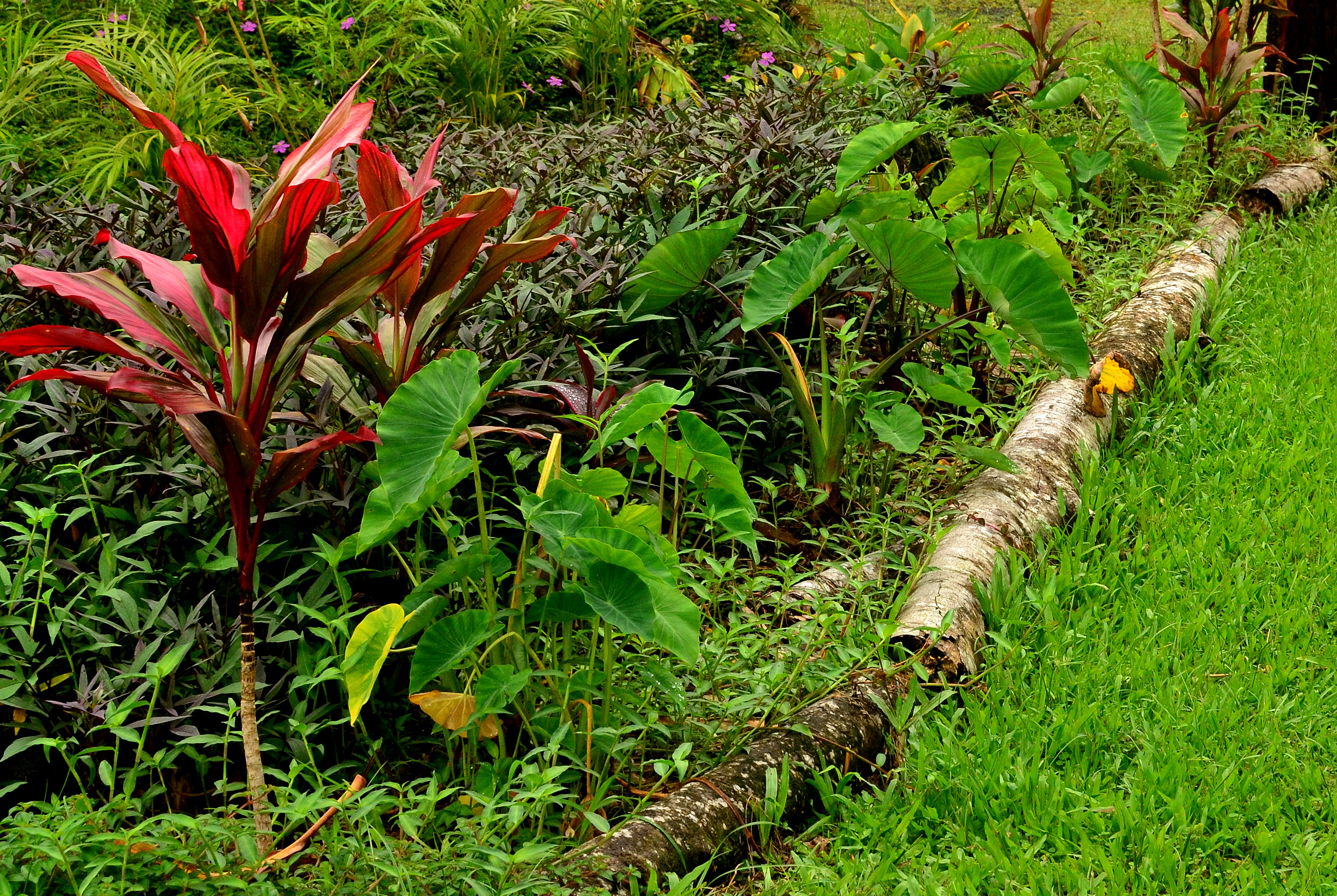
My other plot is still growing and I am stunned at its permaculture beauty. I randomly planted all my obtained taro under some fruit (papaya, blood orange, star apple, Brazilian cherry, ice cream bean) and flower (hibiscus) trees because I know taro likes shade and I wasn’t sure how else to occupy the space so the weeds didn’t just take over again. I then threw sweet potato cuttings all around the taro and sprinkled clover and bean seeds around for some nitrogen fixation. I also planted some sissoo spinach, alternanthera sissoo, but that hasn’t taken off yet so I won’t talk about that. Now some native ferns have popped up, I’ve harvested tons of beans, left many so it will reseed itself, and the sweet potatoes have taken over. Now I weed that plot about once a month and let it do its thing. Since that plot is on the edge of the unmanaged wilderness I just cut back the plants to maintain my path with some quick chop and drop and all is well.
The new bed I just planted the taro in, accidently happened while I was weeding out an area from the not so shy, shy grass, Mimosa pudica. I was clearing out the shy grass because of its thorns and my desire to remove all of it from the property, and I discovered some beautiful dark earthworm filled soil. Since this area is outside of our lanai I’ve wanted to add some extra beauty to the area. As I discovered this beautiful soil I thought to myself, what plants would thrive in this soil and are ultra tropical looking, I’m determined to make outside the lanai ultra tropical ha-ha, and taro came to mind right away. Since this area will be shaded out one day by the fruit trees (cacao, snake fruit and lemon) and some nitrogen fixing trees for chop and drop and shade. And I’m writing this blog so taro was the next logical plant to write about. This is another experiment using only materials from the property + cardboard for creating beds. I’m trying to eliminate products brought in, especially the free mulch from the transfer center, even though it is a great resource, but I just do not know what could be in there; pesticides, insecticides, invasive seeds, seeds from unwanted plants, fire ants, who knows! We will see how it goes.
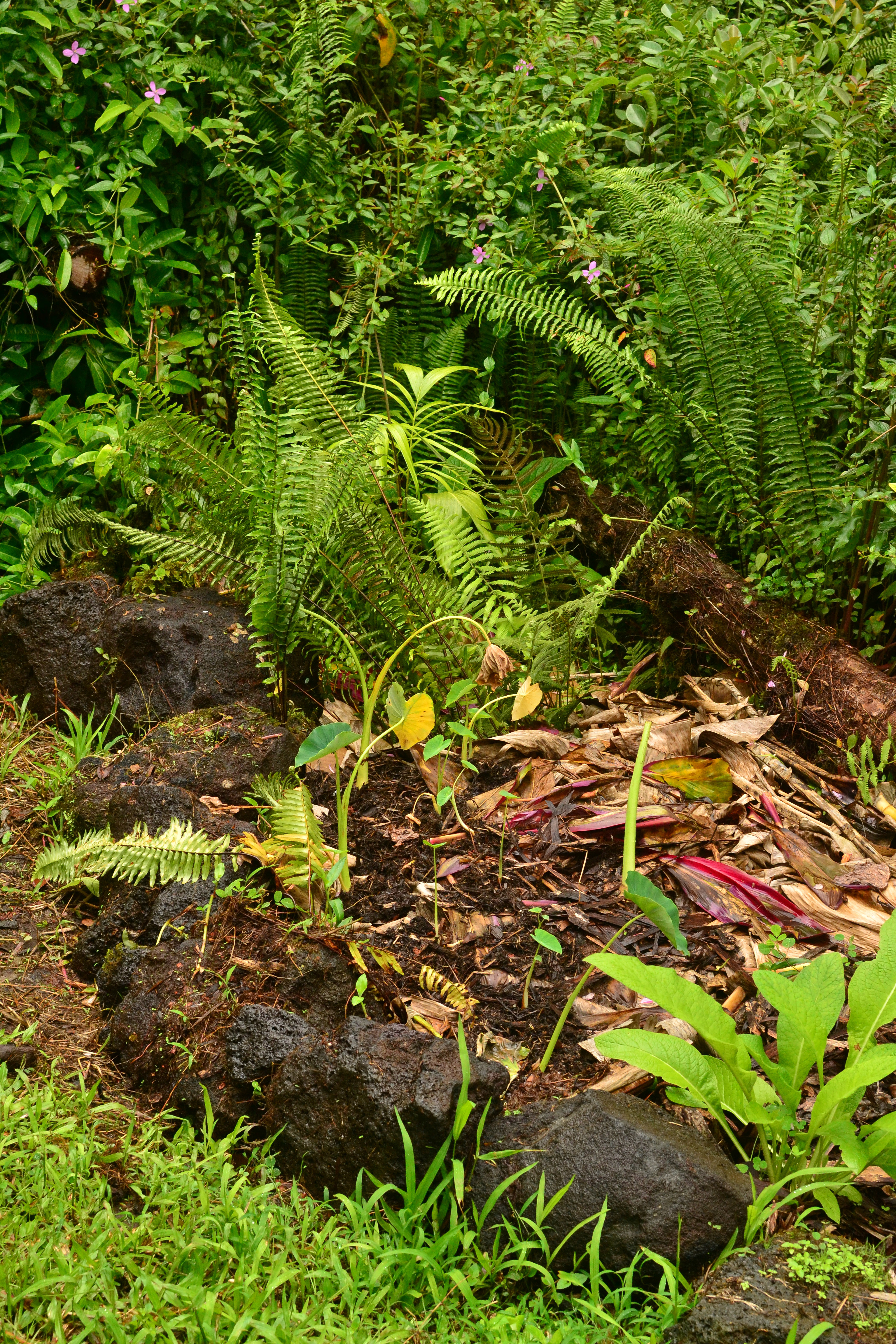
Happy gardening!
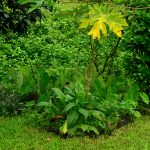

Pingback: Rapid Resilient Food Systems | Tropical Self-Sufficiency